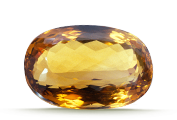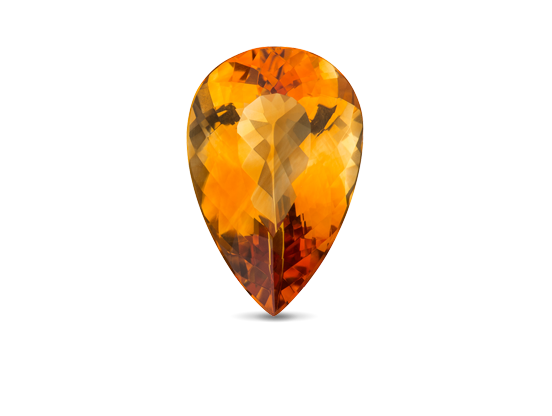Overview
Citrine is rare in nature. In the days before modern gemology, its tawny color caused it to be confused with topaz. Today, its attractive color, plus the durability and affordability it shares with most other quartzes, makes it the top-selling yellow-to-orange gem. In the contemporary market, citrine’s most popular shade is an earthy, deep, brownish or reddish orange.
Birthstones & Anniversaries
Along with topaz, citrine is a birthstone for November. It’s also recognized as the gem that commemorates the thirteenth anniversary.
Iron
A trace of iron in citrine’s structure is responsible for its yellow-to-orange color.
Heat
Natural citrine is rare. Most citrine on the market is the result of heat treatment of amethyst.
Popular
Citrine is recognized as one of the most popular and frequently purchased yellow gemstones.
Facts
-
Mineral:
Quartz
-
Chemical composition:
SiO2
-
Color:
Yellow to orange to orangy red
-
Refractive index:
1.544 to 1.553
-
Specific gravity:
2.66 (+0.03/-0.02)
- Mohs hardness: 7
Treatments
There are a number of processes used to alter the color, apparent clarity, or improve the durability of gems.
Learn MoreSynthetics
Some gemstones have synthetic counterparts that have essentially the same chemical, physical, and optical properties, but are grown by man in a laboratory.
Learn MoreImitations
Any gem can be imitated—sometimes by manmade materials or by natural materials chosen by man to impersonate a particular gem.
Learn More
Why We Love This Gemstone
Affordable
Even fine citrine has a modest price tag. Large gems remain affordable, as price per carat does not rise dramatically for larger sizes.
Geodes
Giant hollow crystal-lined amethyst geodes from areas like Brazil are often heated to become giant citrine “cathedrals.”
Ametrine
In Bolivia, amethyst and citrine colors can occur together in the same crystal. These unique gems are called ametrine.
Quality Factors
The following factors combine to determine a citrine’s value.
Color

Vivid yellows, reddish oranges, and earth tones are popular with consumers.
Clarity

Eye-visible inclusions are not common in citrine. If present, they decrease its value.
Cut

Citrine might be carved, custom-cut, or calibrated for jewelry use.
Carat Weight

Citrine is available in a wide range of sizes for setting into a variety of jewelry styles.
Citrine Quality Factors: The Comprehensive Guide
Research
Explore sources, gemological research, and the role of gems in history.






















